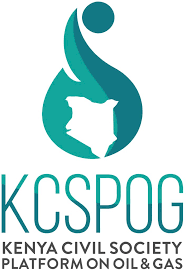Is margin’s compensation a sustainable oil price stabilization mechanism?
By Teresa Bosibori
Petrol and diesel prices have remained unchanged for the November to December period following the monthly review by the Energy and Petroleum Regulatory Authority (EPRA) thus providing further relief to consumers from the consistent increase in rates. Fuel rates have now remained unchanged for the second consecutive month even though the landed costs of super increased by 4.6 per cent and diesel by 6.51 percent. On the other hand, supplier margins reduced by Ksh 6.26 for super and Ksh 5.50 for petrol. The review also comes at a time when inflation is rising and the Kenya Shilling is depreciating against the US Dollar at 111.91. Globally, crude prices are also on the rise with a barrel hitting an all-time high at 85 US dollars while the current pricing formula was reviewed based on October barrel price of 69.73 US dollars. As demand continues to recover after the pandemic and production continue to gradually increase, crude prices are expected to further increase.
The government plans to utilise the Petroleum Development Levy (PDL) to compensate the Oil Marketing Companies (OMCs) for the difference in margins through a compensation mechanism that is yet to be disclosed. This is not the first time that the fuel retailers are being compensated. Earlier in the year, the government in an attempt to cushion consumers also compensated the OMCs for the cut price margins using the PDL. It is not clear how the major oil companies as well as the smaller independent firms were and are to be compensated. The use of the PDL in compensation also remains an issue. The Petroleum Act, 2019 does not contain any provision for a petroleum stabilisation fund, or any fund in that case, with an objective of petroleum price stabilisation. A development fund cannot be claimed to also serve as a stabilization fund, without clear legislation or regulations on the same. Last month, during the National Finance and Planning Committee hearing, it was reported that the PDL had been depleted hence consumers could not be compensated for the September price increases that caused an uproar among Kenyans. There needs to be an account of how the previous revenue generated from the levy has been utilized and how the Oil marketers were compensated.
The government is continuously using margin cuts for oil firms as a stabilisation mechanism yet the mechanisms for compensation are yet to be finalised or made public. Is the compensation sustainable when the government can in the subsequent month claim not to have funds to cushion consumers? The oil pricing formula has constantly been under criticism from the marketers who argue not only does it reduce profitability, it also does not cover financing costs or cushion against inflationary pressures as is the case currently. The proponents for regulation note it is critical in hedging consumers from increased costs of oil and associated products. Kenya practices the price ceiling form of price control where it sets the maximum price that can be charged. Cutting supplier margins will therefore continue to not only destabilise company operations but also create barriers to entry for smaller companies among other consequences. On the fiscal side, there needs to be an account of the source and mechanisms for compensating the OMCs, if this is to be a regular price control mechanism.
In the short run, supply and demand interaction will continue to result in oil price fluctuations whose magnitude and frequency depend on marketing arrangements for crude oil. Forecasts show that the prices will continue to increase in the coming months as economies recover. Continued compensation and cushioning are an indication of price regulatory failure and it may be time to assess the pricing mechanisms. Government should therefore review and adopt better stabilization mechanisms rather than supplier margins compensation that are not regulated or public to the taxpayers. The use of taxes and levies, such as reducing the PDL, is a more effective mechanism in cushioning consumers against increased prices.
